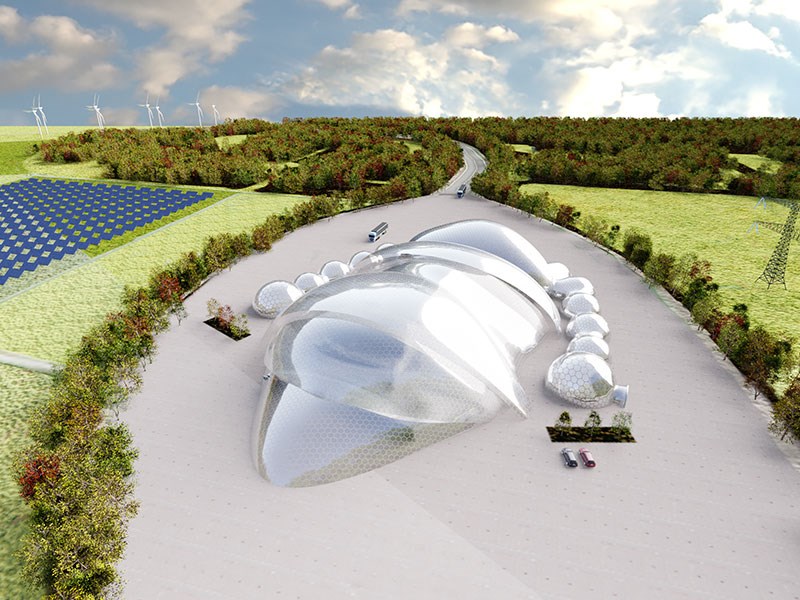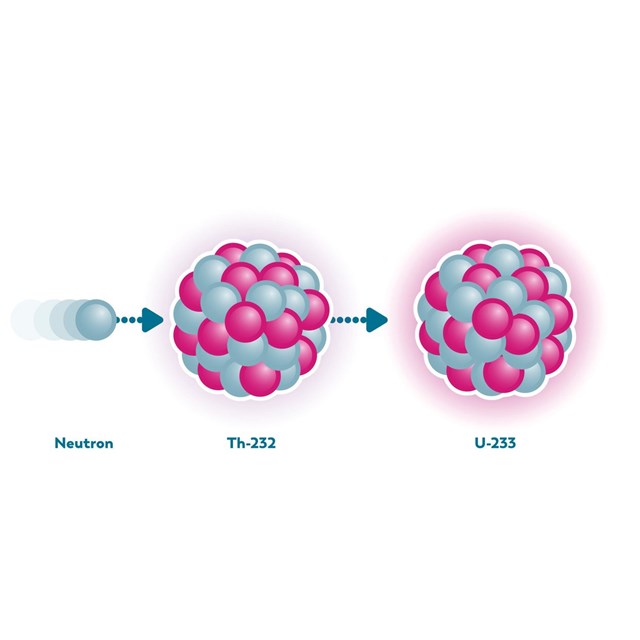Nuclear energy & the future
Sustainable nuclear energy for the future
With existing nuclear power plants, we make electricity safely and reliably. Society is looking for ways to make nuclear energy even more sustainable. Take thorium reactors, for example. We therefore invest in research into nuclear energy for the future.
We study:
- Small nuclear reactors which are ideal for making electricity, but also for district heating. These reactors can also generate extremely high temperatures for the process industry or to make hydrogen. Such reactors can supply electricity and heat for the entire port of Rotterdam.
- Nuclear reactors can produce less waste and manage the natural 'fuels' of uranium and thorium much more economically.
NRG does not design these kinds of nuclear reactors itself. However, we do contribute to the international developments. We deliver knowledge of computer models and perform research with our own research reactor and laboratories.

Small reactors
Big nuclear reactors are extremely expensive. Small reactors are more affordable to buy and possibly also in use. There is therefore a great deal of attention worldwide for small reactors. The parts can also be made in a factory. These parts can be easily transported to the place where the nuclear power plant will be constructed. There they are put together like a construction package. For big nuclear power plants, most of the parts are made on-site, which is much more expensive.
A good example is the Swedish LeadCold. Together with them, we use computer models to study the safety of their small lead-cooled reactors. These reactors are a bit like nuclear batteries. They can deliver power to remote, sparsely populated areas without electricity, for example in northern Canada. These small lead-cooled reactors are also ideal for district heating or to deliver heat to industry. Such plans are at an advanced stage in England and Finland, for example.
A second example is the contribution of NRG to the development of gas-cooled reactors. These reactors work with much higher temperatures. As such, they are extremely efficient and ideal for making high temperatures for the process industry or for producing hydrogen.
Lees meer over:
Contact

Geert-Jan de Haas
Programme-manager Nuclear Research
Less waste and more economical with 'Fuel'
When we talk about making nuclear energy more sustainable, we mainly mean creating less waste and more economical use of fuel. All existing nuclear reactors use uranium as 'fuel'. This uranium is used in a reactor to help make high temperatures. However, we can use uranium much more economically. In fact, 50 to 100 times more economically. We can also produce less dangerous waste if we use spent fuel from one reactor again as fuel for a different type of nuclear reactor.
Waste is then no longer waste, but we can re-use it in a useful way. This other, new reactor can no longer be cooled with water, but for example with liquid metals like sodium or lead. NRG, therefore, does experimental research into the behaviour of such uranium 'fuel'. We also develop computer models to perform safety calculations for such nuclear reactors.

Thorium and Molten Salt
Another way to produce less waste and be more economical with 'fuel' is to switch from uranium to thorium. Thorium produces virtually no long-lived dangerous radioactive waste. And there is plenty of thorium in the world. On many sandy beaches, it is waiting to be picked up. So, thorium is very promising, particularly if it is used in a special type of nuclear reactor, a molten salt reactor. Such reactors do not yet exist, but if we work hard, they can be there in few decades.
NRG is conducting pioneering research by irradiating thorium in molten salt in our research reactor in Petten. These experiments are unique and are attracting attention from developers of molten salt reactors from all over the world. NRG is also developing unique computer models for the safety calculations of these types of nuclear reactors. This is also attracting international attention.
More information?
Want to know more about sustainable Nuclear Energy for the Future? Then NRG is the place to be for anyone wanting to know more about modern, climate-neutral nuclear energy. Our experts are available to answer any political and policy questions about safe nuclear energy and making our energy supply climate neutral.
